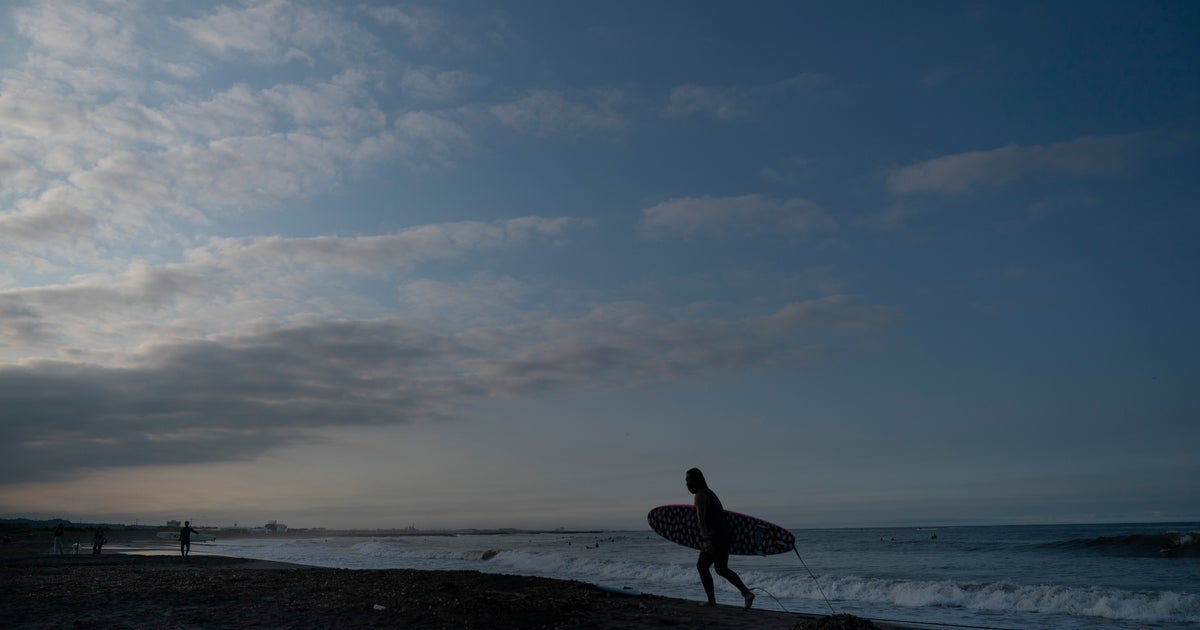Surfers test waves ahead of sport’s Olympic debut at Tokyo


ICHINOMIYA, Japan (AP) — As one of five new sports added to the program for 2020 Tokyo Olympics, surfing is arguably the most glamorous and is sure to bring a new dimension as the IOC seeks a younger audience.
The big question for Tokyo will be the quality of the waves. While Japan has a surfing culture that began over 100 years ago, the country isn’t known for the type of mammoth waves that can be found at surfing hotbeds like the North Shore of Hawaii or Big Sur in California.
Japanese surfers got a chance to check out the waves in a four-day test event that concluded on Sunday at Tsurigasaki beach where the surfing event will be held.
On the east shore of neighboring Chiba prefecture, Tsurigasaki is about a two-hour train ride from the center of Tokyo. Through the final day of the competition on Sunday, most of the feedback was positive, although some surfers said the waves weren’t big enough.
“There’s an idea that the waves aren’t sufficient but they were probably three to four feet, which is absolutely good contestable conditions for a solid competition,” said Robert Fasulo, executive director of the International Surfing Association. “I think the novelty and uniqueness of what we are bringing is going to create a lot of interest.”
One the most popular surfing spots in Japan, Tsurigasaki was selected because it has more consistent waves than other locations near Tokyo.
“I think this beach was chosen for its consistent waves,” said Japanese surfer Hiroto Ohhara. “The waves today were a bit small. I plan to surf a lot and gain as much experience as I can, since I know this beach I hope to be able to use it my advantage during the Olympics if I qualify.”
Fasulo said they expect a maximum 4,000 spectators during the Olympic competition. The surrounding community does not boast a lot of infrastructure so many spectators will be looking at a long commute.
“It’s a little far, there is no question about that,” Fasulo said “But that’s the nature of our sport. The people who know and love our sport are willing to travel a little bit farther because the destinations require that.”
The competition will be held over four days but organizers have given the surfing event a window of eight days if the weather doesn’t cooperate.
Surfing’s push to be included in the Olympics has a long history but got a big boost in 2014 when the IOC realized the need to add more youthful, vibrant sports to the Olympic program.
A total of 26 sports applied for inclusion in the 2020 Games and in August of 2016, five new sports, including surfing , were added.
The IOC has also approved the inclusion of surfing on the program for the 2024 Olympics in Paris.
Surfing in Japan dates back over 100 years.
As detailed by Legendary Surfers, most Japanese-style wooden boats at the time had removable floor boards that were called Itago. When the boats were beached after fishing, the children of the fishermen took the Itago out of the boats and used them as body boards. This practice was commonly known as Itago-nori, meaning “Floor board riding.”
During the occupation after World War Two, American soldiers began surfing fiberglass longboards at Kamakura, Karatsu and beaches around the military bases.
The sport boomed in the 1960s and Japan held its first surfing competition in 1966. It is estimated that there are now over two million surfers in Japan.
A total of 20 men and 20 women will qualify for Tokyo with a maximum of two athletes per gender per country.
The four-man heat method will be used. Four athletes will compete at a time, with the best two proceeding to the next round. The length of a heat depends on the condition of the waves and lasts 20 to 25 minutes. In that time, an athlete can ride 10 to 12 waves, with their two highest scores counting.
The United States, Australia and Brazil are expected to be the favorites in Tokyo.
Japan, meanwhile, is hoping to get a boost from Kanoa Igarashi. Born in Huntington Beach, California, the 21-year-old Igarashi recently received dual citizenship in order to compete for his ancestral homeland in 2020. He has become one of the top surfers in the World Surf League and will be a medal contender next year.
In May, Igarashi became the first Japanese surfer to win an elite Championship Tour event when he topped the men’s competition at the Corona Bali Protected.
As host, Japan will get one automatic berth in each of the 20-surfer draws and will have a chance to earn another.
“He’s very talented, I think he could become a face of the games,” Fasulo said.






